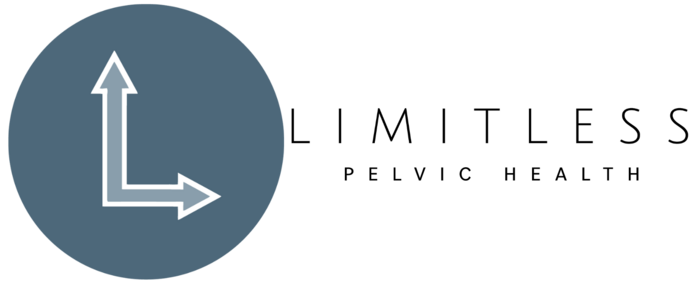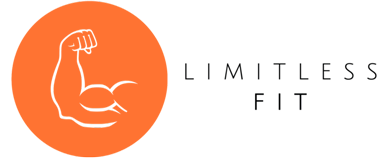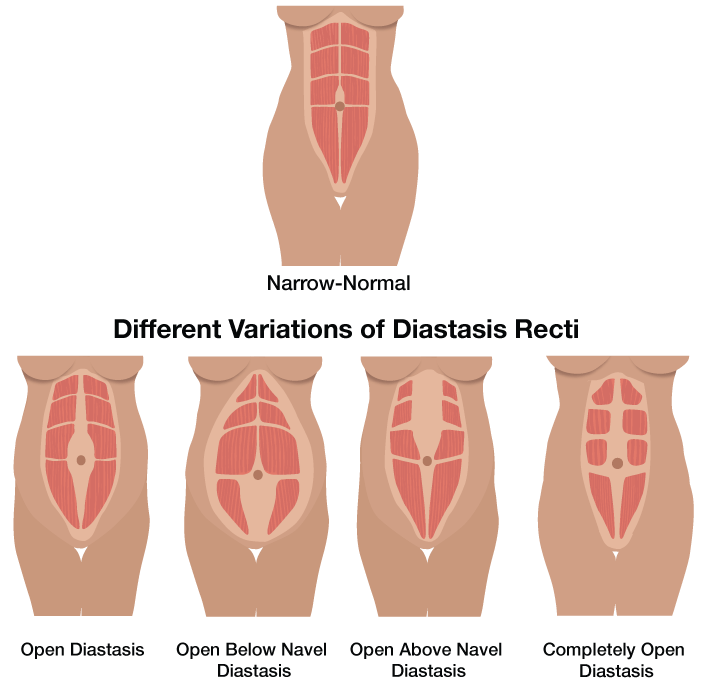What is Diastasis Recti ?
Diastasis Recti ( DR) is defined as a separation of the Linea Alba, which is the connective tissue between the two Rectus Abdominmal muscles. During pregnancy, this fascial connection thins out to accommodate for the growing uterus and is COMPLETELY normal, in fact, 100% of women will have some degree of separation at delivery.
The problem begins when we don’t see healing, or closure, of that separation in the months following your delivery. Most women will have spontaneous healing, but for others we can see the separation persist months to even YEARS Postpartum. Research shows that if your DR is still present > 6 months, your likelihood of healing without intervention significantly decreases.
- What you might feel or see if you have a DR?
- Belly still looks “pregnant” or pooches out
- Nagging Low back pain
- Bulge or dome every time you do an abdominal “crunch”
- Abs won’t “come back” no matter what you do
- Pelvic floor issues like leaking when you cough or sneeze
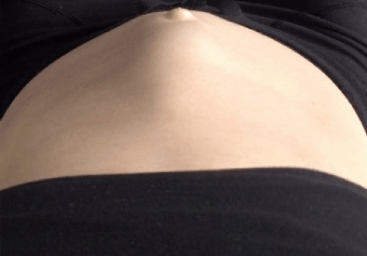
Let’s take some time to talk you through how you can check you own Diastasis.
It’s so important for you to know how to do this and to be able to monitor your body for changes.
DR is measured by width of the separation and as well as the depth.
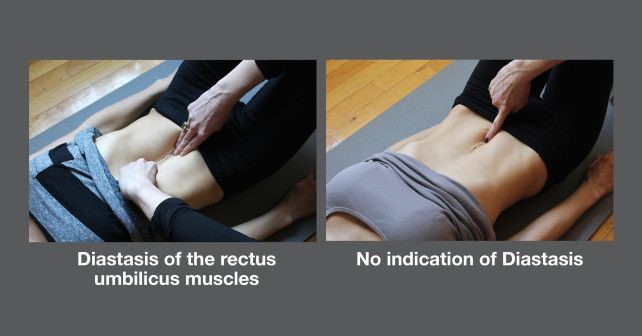
Lie down on the ground with knees bent and place your hand in the middle of your belly. Now, slowly lift you head and feel for any separation. Notice how many fingers ( if any) your can fit in the space? Do you feel a distance of more than 2 fingers? How many?
We also want to pay close attention to HOW it feels? Is it squishy? How deep do your fingers sink in? The tissue should have some firmness.. similar to a trampoline.
What am I possibly doing to make this worse?
It’s human nature to want to “jump” on a problem and try to fix it immediately! I see women that often worsen their DR by doing the wrong exercise. Understandably, this is incredibly frustrating because their entire motive was to get stronger and to feel better!
DR is mostly an “OVERLOADING” and force issue. Given this fact, the most common “offenders” in regard to exercise are those that are considered Front Loading: Front planks, Pilates roll up or “100” , Pikes, Crunch, Sit up, etc.. Ironically, most of these are what women are doing to try to heal their DR!!!
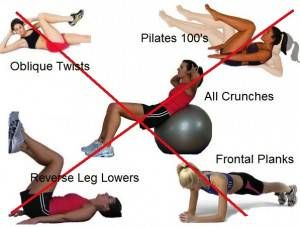
Now, with this said we need to be clear that the most crucial step is evaluating YOUR body in a variety of positions. This is just an example of exercise that MAY be too hard for you now, but our goal is for you to be able to return to exercise and all the activities you enjoy!
You need to monitor your pressure and your DR and see how your body responds to loading. Sometimes it is necessary to regress in order to perform the exercise correctly. We want to build a strong foundation and instill good habits and proper muscle recruitment.
What can I do to see improvement or close my DR?
Fix your breathing!!
When rib mobility and Thoracic spine mobility are poor, we lose the 360 degree pattern which can result in shallow breathing or excess belly breathing. What do you think happens to DR when we breath air out the anterior aspect of our belly all day?
Proper breathing promotes good core strength and posture. It allows us to load and handle resistance/pressure without bearing down or out on abdominal and pelvic floor. We need to see how you handle increased load. What happens to your breathing system when you lift your child? Do you hold your breath? Bear down?
Address Posture:
Posture is HUGE! You can learn all the right exercises, but if you go back to spending all day in poor posture it is going to limit your progress. To have strong abdominals and a healthy core, we MUST have proper Diaphragm function. In order for the Diaphgram to function correctly, we need to have ribs stacked over pelvis along with neutral pelvic alignment. This allows our body to use our core with daily tasks, such as cleaning , walking, lifting, etc..In the absence of good alignment, our body WILL find ways to compensate…cue neck and low back pain. We need to find that perfect balance between forward and backward weight shift, align our head over our body and stop locking our knees!!!
Let’s take a quick look below at two examples of poor and corrected posture:
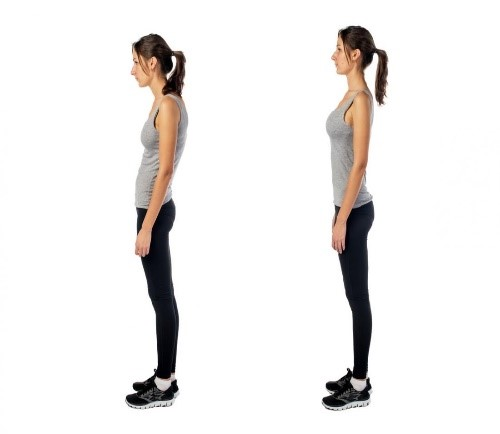
Notice the forward hips, she is hanging on the hip joints (ever notice your hip and lower belly touching the kitchen counter?)
Her ribs are thrust forward and up. Her glutes are clinched, tucking her bottom under and her head is forward of her body.
In the corrected posture, we have a restored curve in lower back, Ribs nicely stacked over pelvis, slight chin tuck and head in line with body. Neutral alignment of our pelvis puts her core in the ideal position to fire and be effective.

Here again you see the forward hips and high hinge, or sway. If you stand with your back against a wall, your back should not touch before your bottom!
Now, in the second image we see a HUGE change just due to some simple cues and weight shifts. Many Postpartum women are putting their weight all the way forward and just need to lean back a bit. Pulling on your high pony tail gives great feedback to grow taller without arching or sticking your ribs forward and up.
Do you notice the improved ability she has to find her lower abs??
Add strength and balance to your system:
We need to understand the different layers and functions of our abdominal muscles. Our Transverse Abdominus is part of our deep core and provides tension to assist in stabilizing the spine. It’s function is crucial to healing a DR! One of our first steps in addressing closure is to learn how to find and isolate our TAs.
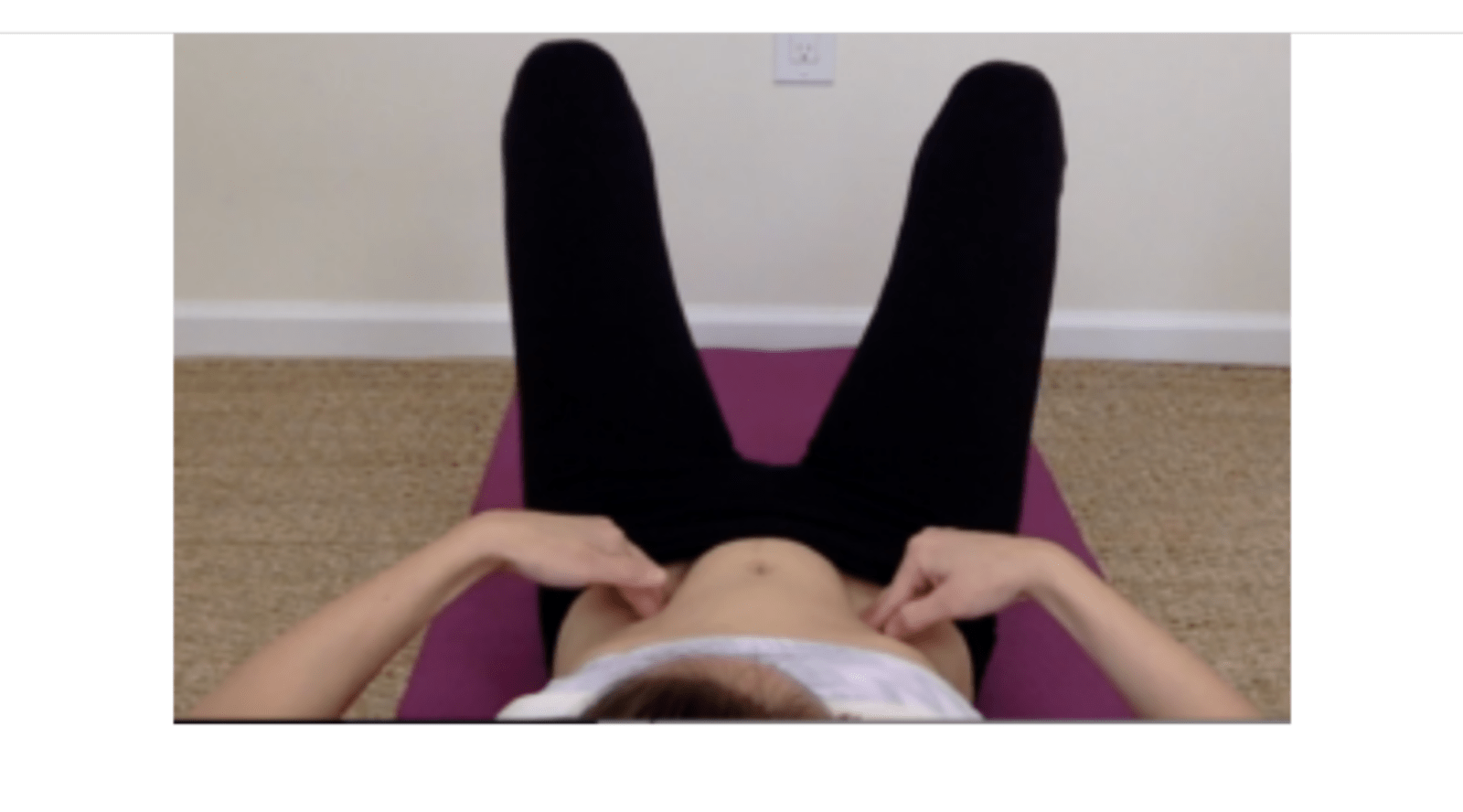
The Rectu Abdominus( 6 pack muscle) is a superficial layer that tends to dominate and can lead to more bulging. We can avoid this by learning how to balance this contraction out with our TA’s.
In this image , you can clearly see the overactive Rectus. Notice the “valleys” on either side? This is where we want to see TA kick in to flatten those lower abs.
We also need to find a perfect balance of External Obliques and Internal Obliques. Weak IO leads to a very wide ribcage , which has a “pulling out” affect on our mid line. Overactive EOs are seen in a very narrow ribcage and fall into the “AB gripping” category. This gripping of our upper abs leads to bulging or “pooching” out in our lower belly, as well as downward pressure on the pelvic floor. Part of my assessment for DR is measuring the Infra-sternal angle and checking for rib flare. How our ribs move gives us a big hint as to what is going on with our core!
Next, we need to inhibit, or “down-train”muscles that are too active or tight, including the pelvic floor. Pelvic Floor tightness can play a major role in the presence of Diastasis Recti…which is why I want you to understand the role it plays in your core and be able to talk to your provider about assessment and treatment!
We do not want to leave out such an important factor. Our pelvic floor loves to jump in and try to help with other areas of the body that aren’t “doing their job”. When we have abdominal weakness, we often see over-activity of the pelvic floor. Constant, low level tone /tightness in pelvic floor muscles continue to limit your ability to engage those deep muscles ( TA’s). You can see how this creates a viscous cycle!
The next group that I commonly address is Glutes and Hamstrings vs Hip flexors. Our hip flexors are stubborn and they want to show up for everything! There is a need for us to work on awareness and exercise with intention in order to bring the right muscle activity for the chosen task. Glutes and Hamstrings play a major role in posture, often helping us correct that sway or Anterior tilt in our pelvis. They also allow us to squat and lift with power, but they cannot do their job if our Hip flexors never “turn off”.
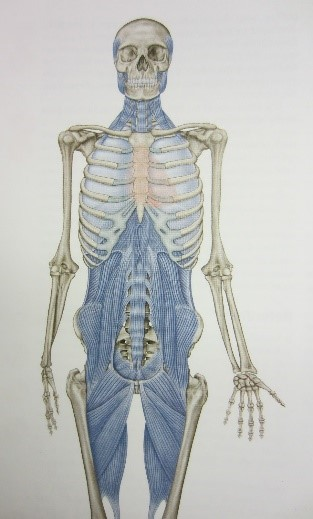
Wrapping Up:
Diastasis is a whole body issue, not simply isolated to the abdomen. I love this picture of our deep frontal fascia…talk about connected!
Can you see how tightness or weakness in one area can affect other parts of your body?
Look at the connection along this “anterior chain”…neck, abdomen, hip flexors, adductors. Limitations/restrictions in one area ANYWHERE along our kinetic chain can affect the body.
My goal in working with clients is address their body as a fully integrated system. We need to identify the poor loading patterns , fix breathing, address posture, perform the right exercise , and build balance and strength.

